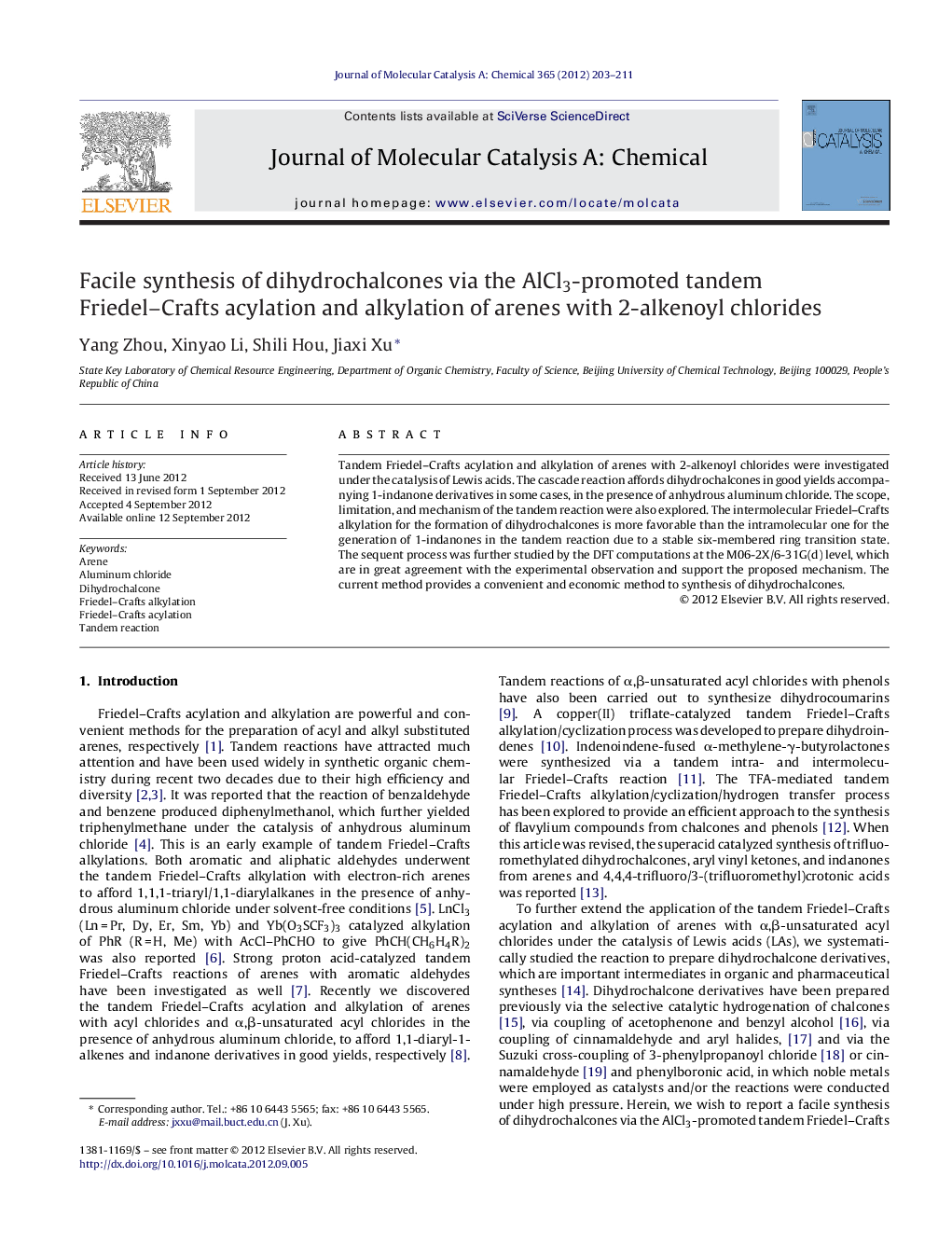| Article ID | Journal | Published Year | Pages | File Type |
|---|---|---|---|---|
| 66097 | Journal of Molecular Catalysis A: Chemical | 2012 | 9 Pages |
Tandem Friedel–Crafts acylation and alkylation of arenes with 2-alkenoyl chlorides were investigated under the catalysis of Lewis acids. The cascade reaction affords dihydrochalcones in good yields accompanying 1-indanone derivatives in some cases, in the presence of anhydrous aluminum chloride. The scope, limitation, and mechanism of the tandem reaction were also explored. The intermolecular Friedel–Crafts alkylation for the formation of dihydrochalcones is more favorable than the intramolecular one for the generation of 1-indanones in the tandem reaction due to a stable six-membered ring transition state. The sequent process was further studied by the DFT computations at the M06-2X/6-31G(d) level, which are in great agreement with the experimental observation and support the proposed mechanism. The current method provides a convenient and economic method to synthesis of dihydrochalcones.
Graphical abstractFacile synthesis of dihydrochalcones via the AlCl3-promoted tandem Friedel–Crafts acylation and alkylation of arenes with 2-alkenoyl chlorides tandem Friedel–Crafts acylation and alkylation of arenes with 2-alkenoyl chlorides under the catalysis of Lewis acid was investigated. The tandem Friedel–Crafts reaction affords dihydrochalcones accompanying indanone derivatives in some cases, in the presence of anhydrous aluminum chloride.Figure optionsDownload full-size imageDownload high-quality image (103 K)Download as PowerPoint slideHighlights► Tandem Friedel–Crafts reaction of arenes and 2-alkenoyl chlorides was investigated. ► The cascade reaction affords dihydrochalcones in good yields. ► The scope, limitation, and mechanism of the tandem reaction were explored. ► The sequent process was further studied by DFT computations. ► Dihydrochalcones generate through a more stable six-membered ring transition state.
